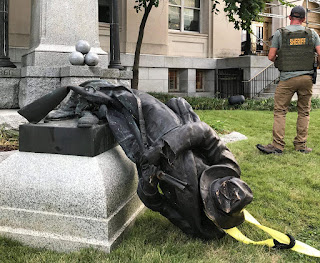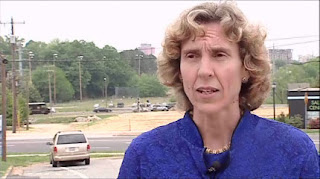



The V.A.’s Shameful Betrayal
THE Department of Veterans Affairs, already under enormous strain from the aging of the Vietnam generation, the end of the Iraq war and the continuing return of combat troops from Afghanistan, announced in April that it would increase its mental health staff by about 10 percent. But too many veterans waging a lonely and emotional struggle to resume a normal life continue to find the agency a source of disappointment rather than healing.
The new hiring is intended to address the infuriating delay veterans face in getting appointments. The V.A. says it tries to complete full mental health evaluations within 14 days of an initial screening. But a review by the department’s inspector general found that schedulers were entering misleading information into their computer system. They were recording the next available appointment date as the patient’s desired appointment date. As a result, a veteran who might have had to wait weeks for an appointment would appear in the computer system as having been seen “without a wait.” That allowed the agency to claim that the two-week target was being reached in 95 percent of cases, when the real rate was 49 percent. The rest waited an average of 50 days.
As a veteran of both Iraq and Afghanistan, I found that news maddening. While the schedulers played games with the numbers, veterans were dealing with mental wounds so serious that getting proper attention at the right time might have made the difference between life and death. Even worse was that the V.A. had failed twice before to change; the inspector general found similar problems in 2005 and in 2007. This suggests a systematic misrepresentation of data and an unwillingness to stop it.
Unfortunately, the problem goes even deeper. There are potentially hundreds of thousands of veterans who are struggling with post-combat mental health issues who never ask the V.A. for help. Some, hamstrung by fear of stigma, are too proud or too ashamed to ask for help. Others don’t ask because they’ve heard too many stories from peers who have received poor care or been ignored.
I have close friends who could no longer drive because of their lingering fears of roadside bombs. Others had gone to the V.A. because they had suicidal thoughts, only to receive a preliminary screening, a pat on the back, a prescription for antidepressants — and a follow-up appointment for several months later.
I’ve had my own struggle: in 2001 I was part of the initial force of Marines who landed in Afghanistan, and in 2003 took part in the heavy fighting of the first wave of the invasion of Iraq. Since coming home, I’ve had my mind hijacked by visions of the corpses of children, their eyes blackened, at the side of the road. I recall carrying the coffins of fallen brothers. I remember losing friends who probably knew exactly what was happening to them, as they bled out on the side of a dusty road in Iraq.
And I’ve felt the shame of having suicidal feelings. Like many others, I chose to hide them. Yet, even in the darkest days of my own post-traumatic stress, when I was considering choosing between making my suicide look like an accident or taking a swan dive off some beautiful bridge, I never considered going to the V.A. for help.
My image of the V.A., formed while I was on active duty, was of an ineffective, uncaring institution. Tales circulated among my fellow Marines of its institutional indifference, and those impressions were confirmed when I left Iraq for home. At Camp Pendleton, Calif., a woman with a cold, unfeeling manner assembled us for a PowerPoint presentation and pointed us to brochures — nothing more, no welcoming sign of warmth or empathy for the jumble of emotions we were feeling. Her remoteness spoke volumes to me of what I might expect at home.
To regain veterans’ trust, the V.A. must change its organization and culture, not just hire more people. First, its leadership must be held accountable for employees’ behavior, and anyone caught entering misleading data should be fired. The agency must reach out, with public awareness campaigns and with warmth, to veterans who may be suffering in silence. It must help reduce the social stigma that attaches to the mental health issues the veterans face.
Dedicated V.A. personnel run a suicide-prevention hot line, but it is only a temporary salve for emergencies. One impressive and highly effective alternative to the V.A.’s traditional treatment process is the Wounded Warrior Project’s Combat Stress Recovery Program, which emphasizes the importance of interpersonal relationships, goal-setting and outdoor, rehabilitative retreats and seeks to avoid the stigma associated with traditional treatment.
What this generation of veterans needs from the V.A. is a recognition that when the color of life has faded to gray, you need to talk to someone about it today, not weeks or months from now. We need America to acknowledge what war does to the young men and women who fight it and to share the message that dragged me out of the darkness: It’s O.K. if you’re not O.K.
U.S. must address suicides by Military Veterans
As we recall those who gave their lives for our freedoms on this Memorial Day, here’s something to consider: More veterans of the Iraq and Afghanistan wars have died by their own hand than died from enemy fire.
The shocking statistic comes straight from the Department of Veterans Affairs: 18 military veterans commit suicide every day. The youngest, between the ages of 17 and 24, are four times more likely to kill themselves than older veterans. To make the numbers even more agonizing, the men and women who fight for our freedoms have never been more isolated from their countrymen: less than 1 percent of the population has served in the armed forces in Iraq and Afghanistan.
It’s an unacceptable state of affairs. “We don’t do a good job of understanding the reality of their lives and connecting them to services they need,” said Rep. Rob Andrews (D-1st Dist.), a member of the House Armed Services Committee. More than half the people who have fought in Iraq and Afghanistan have been part-time warriors, returning to jobs as teachers, construction workers, police and firefighters.
“You’re plucked from civilian life, go into war zone, then you get a 30-day transition back to your regular job,” Andrews said. “That’s not a lot of time to find out about programs to deal with problems, like stress. We need to figure out better ways to get them plugged into services.”
About 17 percent of homeless people are veterans. Others have returned home and devolved into drug addiction or erupted into violence. You’d think the Veterans Administration would figure out how to deliver the best mental health care to these veterans, and fast.
But just last month, a report by the administration’s inspector general revealed disarray and disorganization in exactly this department: The VA did not provide timely mental health evaluations and existing patients often waited more than two weeks for treatment. VA officials say they are hiring 1,900 more mental health specialists and support staff to strengthen its mental health network.
But local initiatives and outreach are crucial, too. Gov. Chris Christie already has announced that the recently closed Hagedorn Psychiatric Hospital will be transformed into a 100-bed transitional facility for homeless veterans. Andrews said county offices in New Jersey, most of which have a veterans office, distribute information at street fairs and other local events. “Stand Downs” — where veterans volunteer to help connect other veterans to drug rehab, jobs and housing — also have been effective. But more needs to be done.
A fitting Memorial Day tribute will be honoring those who died for their country and recommitting ourselves to the well-being of those veterans who, invisibly, struggle quietly among us.
View Larger Map
Sources: AP, CBS News, CNN, NJ.com, NY Times, Russia Today, Youtube, Google Maps







































































.jpg)























No comments:
Post a Comment